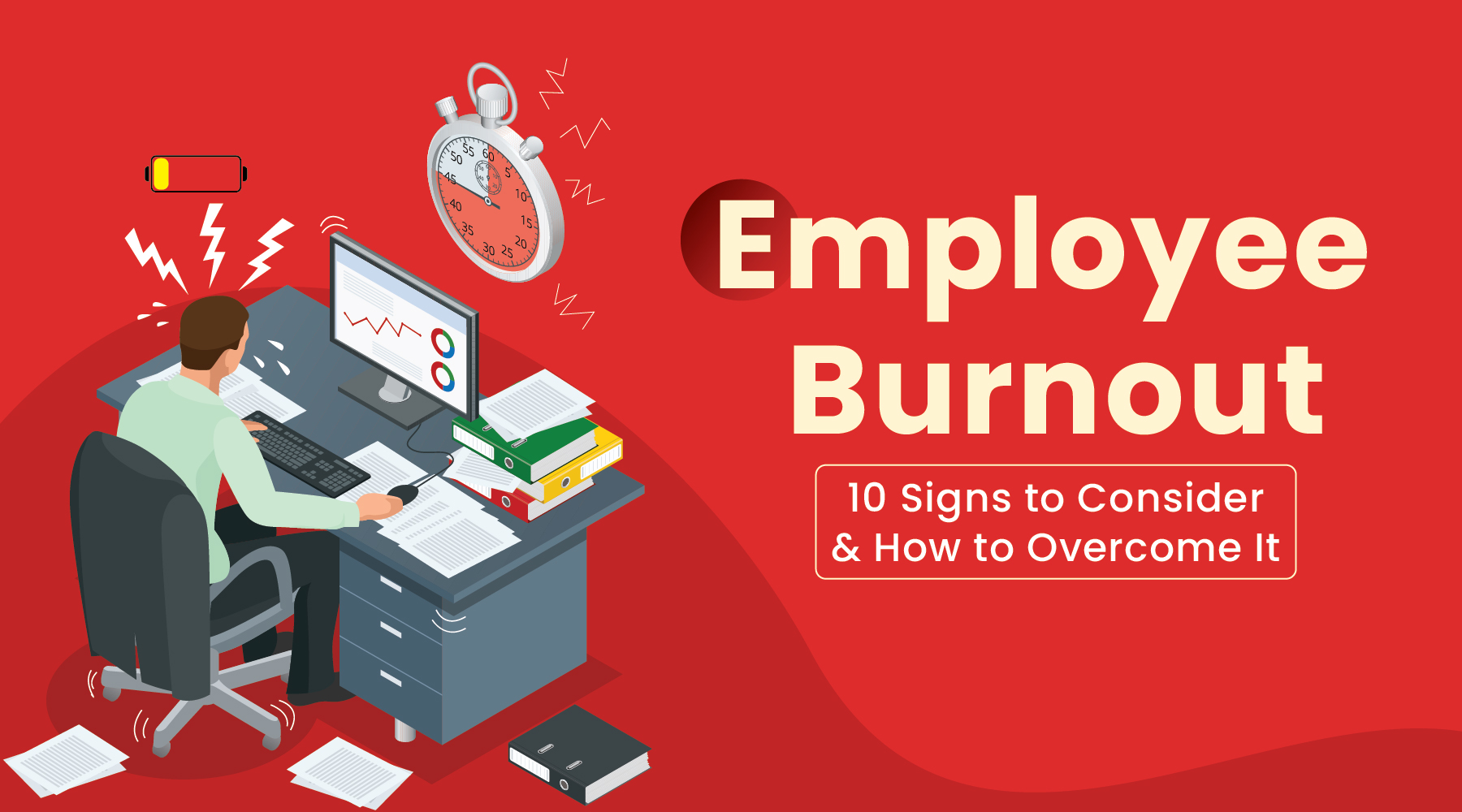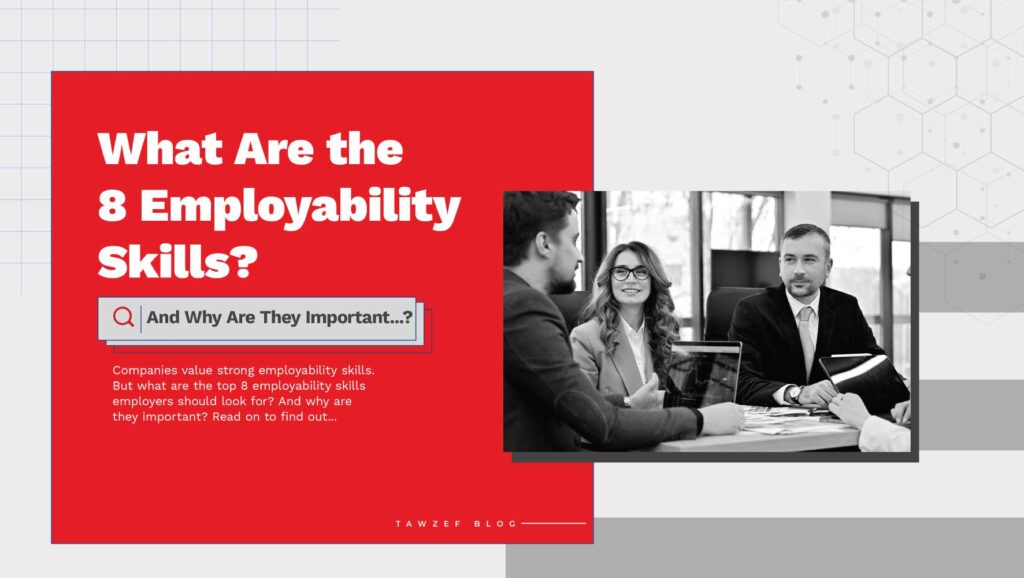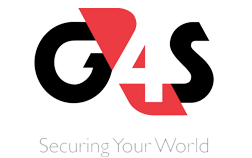One of the biggest problems plaguing businesses of all sizes today is employee burnout. Burnout isn’t new. And it’s not limited to location or industry. It’s all over the world.
However, burnout and mental health are issues that have emerged after the pandemic changed work environments and habits. The pandemic forced people to work from home for months, blurring the lines between personal life and work life.
The Middle East and North Africa (MENA) region began seeing more employees talk openly about burnout and their mental health.
Unfortunately, many managers still find it difficult to talk to their employees about mental health.
For many the pandemic has corroded the idea of work-life-balance. For others, working remotely has had a positive effect on productivity.
Whether you’re a business owner, HR executive, a middle manager, or a team leader, you should be aware of a few things:
- What causes employee burnout (the factors)
- Burnout affects employees regardless of job and tasks
It’s worth mentioning that dealing with mental health, including burnout and the causes of employee burnout are one of the top HR trends in 2023.
In this article, we’ll be covering what burnout is, the causes of employee burnout, and how to prevent burnout in your team.
What is employee burnout?

What is employee burnout?
To understand burnout and identify its causes, we must first clarify what it means.
Here’s the Mayo Clinic’s definition of employee burnout:
“Job burnout is a special type of work-related stress—a state of physical or emotional exhaustion that also involves a sense of reduced accomplishment and loss of personal identity.”
The biggest problem with burnout is that it “isn’t a medical diagnosis.”
According to the Mayo Clinic, researchers believe that some people are more prone to burnout than others. Factors such as “personality traits and family life” can “influence who experiences job burnout.”
The World Health Organization (WHO) defines burnout as a “syndrome…resulting from chronic workplace stress that has not been successfully managed.”
The WHO cites low energy and exhaustion, increased distancing, and “reduced professional efficacy” as signs of employee burnout.
It’s important that when we talk about employee burnout, we also take into consideration that there’s
- HR burnout
- Call center employee burnout
- Manager burnout
There is also:
- Team burnout, which means that an entire team is unable to fulfill its duties.
In other words, job burnout is a phenomenon that affects all levels of employees and can impact teams too.
Employee burnout statistics
To truly understand how burnout affects employees, and how it can affect your business, let’s explore some employee burnout statistics.
A survey by FlexJobs and Mental Health America (MHA) found that 75% of people struggled with job burnout, with 40% specifying the pandemic as the cause of their burnout.
Roughly 37% of “employed respondents” reported working “longer hours than usual” at the time.
The survey, which included over 1,500 people, was conducted during the heat of the pandemic, specifically during July 2020.
Employee burnout in the Middle East
A McKinsey survey of GCC professionals showed that two-third of employees surveyed suffered from “poor mental health and well-being.”
Meanwhile, one in three employees surveyed “reported burnout symptoms,” while others said they “struggle[d] with physical health conditions.”
McKinsey surveyed over 4,000 employees from Saudi Arabia, Kuwait, Qatar, and the UAE.
What causes employee burnout

What causes employee burnout?
So, what are the main factors or causes of job burnout? What are possible signs you need to watch out for?
There are many reasons why employees burn out. And they keep increasing. Here are the top causes:
1) Toxic work environment
A toxic workplace is likely to cause burnout among team members. That’s besides the various negative impacts of a toxic work environment such as reduced productivity, lack of teamwork, among other issues.
McKinsey’s survey found that GCC employees who worked in a toxic environment or with toxic employees were “seven times more likely to experience burnout.”
Employees who suffered from burnout were “four times more likely” to consider quitting their job “in the [following] three to six months.” That’s compared to the “global average of six times.”
2) Toxic manager
Sometimes you don’t need a toxic workplace to drive people away. It can be a toxic manager, who misuses their managerial powers, overworks employees, makes continuous requests, takes credit for others’ efforts, among other toxic practices.
Toxic managers, including micro managers, often make it harder for a team to act as a team. They often overwork their team members
3) Work overload
Overworked employees often end up with burnout. Overwork can come from others quitting, budget cuts, increased workloads without adding new team members, among other reasons.
4) Lack of career progression
Many companies don’t realize this but one of the causes of employee burnout is the lack of career progression. Employees who keep doing the same jobs over and over end up bored and burnout.
They feel unappreciated, demotivated, and unwilling to perform their duties.
5) Increased work stress
The higher the stress, the more likely employees will suffer from burnout. Stress can be due to increased workloads, whether due to layoffs or people quitting, bad manager-employee relationships, among other reasons.
6) Lack of clear communication
One of the causes of employee burnout is – surprisingly – lack of communication. This communication can be between team members, team leaders and their members, or even top management and the rest of the company.
A lack of communication often results in mistakes, increased blame, negativity, and rumors. All of these make it harder for employees to function and be productive.
7) No clear job expectation
Another reason for burnout many don’t consider is the lack of clarity regarding job expectations.
For example, if a middle manager or supervisor discovers they lack authority, they become unable to do their job efficiently.
On the other hand, if a supervisor or team leader abuses their authority or micromanages their team, the result is a toxic work environment, stress, and burnout.
8) No work-life balance
The pandemic has blurred the lines between work and our personal lives. It’s all jumbled up now. And this work-life imbalance is making it much harder for employees to distinguish between the two.
Moreover, the ‘always-on’ mode that many companies promote and expect from their employees is a major cause of burnout.
9) Chaotic or monotonous work environment
A chaotic work environment causes employees to burnout. Ironically, the opposite is also true. A monotonous work environment makes employees lethargic, bored, and unproductive.
10) Financial stress
A common cause of employee burnout is financial stress. Higher inflation and prices stress out employees who struggle to make ends meet.
Data shows that employees with lower salaries are more likely to suffer from burnout compared to those with higher salaries.
How HR can overcome employee burnout
It’s important to uncover the causes of employee burnout within your organization. And it starts with your HR team.
Your HR team needs to find out what’s causing employee burnout and then work on eliminating these causes.
To uncover the causes of job burnout, HR expert and author Dr. Mahmoud Mansi recommends conducting “a root-cause analysis.”
“With a root-cause analysis, HR will be able to understand why employees are working extra hours, why they’re stressed out, and so on,” Dr. Mansi explains.
HR should ask questions like:
- Is the work done correctly?
- Do employees need to repeat any work?
- Is efficiency a problem? Is this why employees have to work longer hours?
“We should understand the technical and emotional obstacles employees are facing to get the job done,” stresses Dr. Mansi.
These obstacles can be related to of one or more of the following:
- Shortage of knowledge
- Lack of experience or expertise
- Lack of tools
- Work culture problems
- Lack of clarity on what needs to be done
- Salaries and bonuses
After conducting the root-cause analysis, Dr. Mansi suggests finding solutions such as:
- Enhancing teamwork
- Engaging and empowering employees
- Supporting employees mentally and emotionally
- Being more accepting towards automation, which can speed up their work
- Ensuring safety standards are carried out
“We need to see how we can re-engineer the current work process to get the same results by working smarter not harder,” adds Dr. Mansi.
Companies should consider artificial intelligence (AI) tools to make it easier and faster for employees to get the work done, while also reducing stress, he adds.
“We need to focus on employee wellness. This includes Physical, mental, and emotional wellness through coaching, exercises and sports, increasing work safety.”
Conclusion
While the pandemic has waned significantly and more companies have resumed a full-time from-the-office or hybrid work routine, people’s work-life balance remains disrupted.
Employee burnout remains high, especially as job layoffs and budget cuts force full-timers to work longer hours.
Whether you’re an HR specialist at your company, the business owner, or team leader, it’s your job to find the causes of employee burnout and work on eliminating them.
“It’s worth remembering that like life, everything has a cycle. So, employees can’t be productive all the time. And we shouldn’t expect this from them,” says Dr. Mansi. “HR should understand that employee productivity has a trend. Employees aren’t robots. They can’t be productive all the time.”
When employees aren’t productive, HR should provide them with motivation, engagement, and support, instead of blaming them for not being productive.
Further reading:
Structured vs unstructured interviews
How to calculate cost of employee turnover
Understanding the recruitment cycle and how to hire better and faster
10 Reasons to start using psychometric assessments for recruitment & selection



























































































































